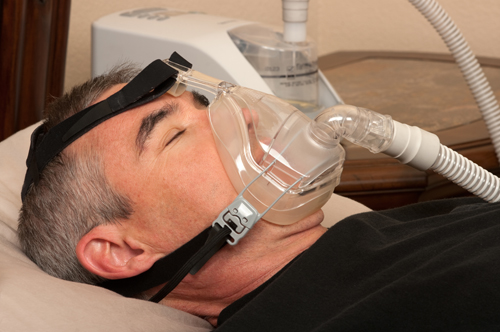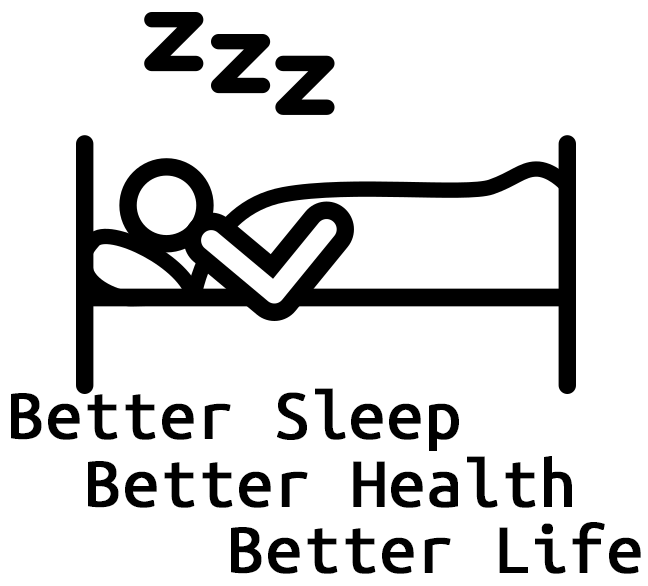Non-Surgical Treatment for Sleep Apnea
 The most commonly prescribed non-surgical treatment for Obstructive Sleep Apnea is a PAP – CPAP, Bi-PAP, or AutoPAP. The PAP is Positive Airway Pressure; C is continuous, Bi has 2 levels, and Auto adjusts automatically. They all use air pressure to keep the airway open. CPAP is the “Gold Standard” and also a very effective treatment; however, the vast majority of people prescribed CPAP are CPAP intolerant – they simply cannot wear the CPAP for a variety of reasons. Some of the reasons are Claustrophobia, Leaking Mask, Noise of Machine (compressor), Limited Sleeping Positions, etc.
The most commonly prescribed non-surgical treatment for Obstructive Sleep Apnea is a PAP – CPAP, Bi-PAP, or AutoPAP. The PAP is Positive Airway Pressure; C is continuous, Bi has 2 levels, and Auto adjusts automatically. They all use air pressure to keep the airway open. CPAP is the “Gold Standard” and also a very effective treatment; however, the vast majority of people prescribed CPAP are CPAP intolerant – they simply cannot wear the CPAP for a variety of reasons. Some of the reasons are Claustrophobia, Leaking Mask, Noise of Machine (compressor), Limited Sleeping Positions, etc.
 The best non-surgical treatment for those patients who are intolerant is Oral Appliance Therapy. “Clinical Practice Guideline for the Treatment of Obstructive Sleep Apnea and Snoring with Oral Appliance Therapy: An Update for 2015 ” is the first official joint guideline by the American Academy of Dental Sleep Medicine and the American academy of Sleep Medicine. Oral Appliance Therapy is recommended for the treatment of adult patients diagnosed with obstructive sleep apnea who are non-compliant or intolerant of CPAP therapy or prefer alternate therapy. This new guideline supports a teamwork of physicians and dentists working together to help these individuals by offering Oral Appliances. Simply speaking, these appliances work by moving the lower jaw forward and opening the “collapsible” part of the airway.
The best non-surgical treatment for those patients who are intolerant is Oral Appliance Therapy. “Clinical Practice Guideline for the Treatment of Obstructive Sleep Apnea and Snoring with Oral Appliance Therapy: An Update for 2015 ” is the first official joint guideline by the American Academy of Dental Sleep Medicine and the American academy of Sleep Medicine. Oral Appliance Therapy is recommended for the treatment of adult patients diagnosed with obstructive sleep apnea who are non-compliant or intolerant of CPAP therapy or prefer alternate therapy. This new guideline supports a teamwork of physicians and dentists working together to help these individuals by offering Oral Appliances. Simply speaking, these appliances work by moving the lower jaw forward and opening the “collapsible” part of the airway.
Non-Surgical Treatment for Sleep Apnea
The most commonly prescribed non-surgical treatment for Obstructive Sleep Apnea is a PAP – CPAP, Bi-PAP, or AutoPAP. The PAP is Positive Airway Pressure; C is continuous, Bi has 2 levels, and Auto adjusts automatically. They all use air pressure to keep the airway open. CPAP is the “Gold Standard” and also a very effective treatment; however, the vast majority of people prescribed CPAP are CPAP intolerant – they simply cannot wear the CPAP for a variety of reasons. Some of the reasons are Claustrophobia, Leaking Mask, Noise of Machine (compressor), Limited Sleeping Positions, etc.


The best non-surgical treatment for those patients who are intolerant is Oral Appliance Therapy. “Clinical Practice Guideline for the Treatment of Obstructive Sleep Apnea and Snoring with Oral Appliance Therapy: An Update for 2015 ” is the first official joint guideline by the American Academy of Dental Sleep Medicine and the American academy of Sleep Medicine. Oral Appliance Therapy is recommended for the treatment of adult patients diagnosed with obstructive sleep apnea who are non-compliant or intolerant of CPAP therapy or prefer alternate therapy. This new guideline supports a teamwork of physicians and dentists working together to help these individuals by offering Oral Appliances. Simply speaking, these appliances work by moving the lower jaw forward and opening the “collapsible” part of the airway.
What if the solution could fit in the palm of your hand?

